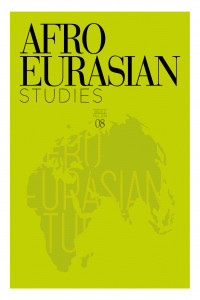Generalized Formulae for Islamic Home Financing through the Musharakah Mutanaqisah Contracts
Generalized Formulae for Islamic Home Financing through the Musharakah Mutanaqisah Contracts
___
- Abdul Rahman, Abdul Rahim. (2007). “Islamic Micro Finance: A Missing Component in Islamic Banking”. Kyoto Bulletin of Islamic Area Studies, 1-2, 38-53.
- Abidin, S. Z., A. Md. Nassir and P. F. F. Khoderun, Musharakah Mutanaqisah: A So- lution To Different Interpretations By Malaysian and Middle East Scholars in Islamic Financing. http://academic-papers.org/ocs2/session/Papers/C8/514-698- 1-RV.doc.
- Eroğlu, A., Kalayci, S., Özdemir, G. and Çetin, A. C. (2010). “Generalized Formulae for the Shared Equity Home Financing Model”. The Journal of Faculty of Economics and Administrative Sciences, Suleyman Demirel University, 15(1), 1-10.
- Greco, Jr., T. H. A Shared Equity (Halal) Mortgage: How Does It Compare With A Conventional Mortgage? http://www.appropriate-economics.org/materials/tom_ greco_ globalization_money_trade.pdf.
- Hijazi, S. T. and M. Hanif. (2009). “Islamic Housing Finance: A Critical Analysis and Comparison with Conventional Mortgage”. Middle Eastern Economic sand Finan- ce, http://ssrn.com/abstract=1483524.
- Matthews, R., Tlemsaniand A. Siddiqui, Islamic Finance. http://www.nzibo.com/IB2/ IF_RIA.pdf.
- Meera, A. K. M. and D. A. Razak, (2005). “Islamic Home Financing through Mushara- kah Mutanaqisahand al-Bay’ Bithaman Ajil Contracts: A Comparative Analysis”, Review of Islamic Economics, 9(2), 5-30.
- Meera, A. K. M. and D. A. Razak, (2005). “Islamic Home Financing through the Mush- arakah Mutanaqisah Contracts: Some Practical Issues”, JKAU: Islamic Econ., 22(1), 121-143.
- Rammal, H. G. (2004). “Financing Through Musharaka: Principlesand Application”, Business Quest. http://ssrn.com/abstract=1442430.
- Siswantoro, D. and H. Qoyyimah, “Analysis on theFeasibilityStudy of MusharakahMu- tanaqisahImplementation in IndonesianIslamicBanks”, http://islamiccenter.kaau. edu.sa/ 7iecon/Ahdath/Con06/_pdf/Vol1/5%20Dodik%20Siswantoro%20-%20 Hamidah%20Analysis. pdf.
- Usmani, Muhammed Taqi, (1999). “The Concept of Musharakah and Its Application as an Islamic Method of Financing”, Arab Law Quarterly, 203-220. Appendix
- ISSN: 2147-110X
- Yayın Aralığı: Yıllık
- Başlangıç: 2012
- Yayıncı: Musiad (Independent Industrialists and Businessmen's Association)
Turkey in the World Trading System and the WTO: Activism under Global Challenges and the EU Process
The Concept of “Middle Power” and the Recent Turkish Foreign Policy Activism
Generalized Formulae for Islamic Home Financing through the Musharakah Mutanaqisah Contracts
Abdullah EROĞLU, Şeref KALAYCI, Hayrettin USUL
Income Distribution in Europe and its Effect on Investment Priorities
The Nature of Lobbying and Regulation in Turkey
Are Sukuk Securities the Same as Conventional Bonds?
Understanding the ‘Arab Spring’: Justice, Dignity, Religion and International Politics
